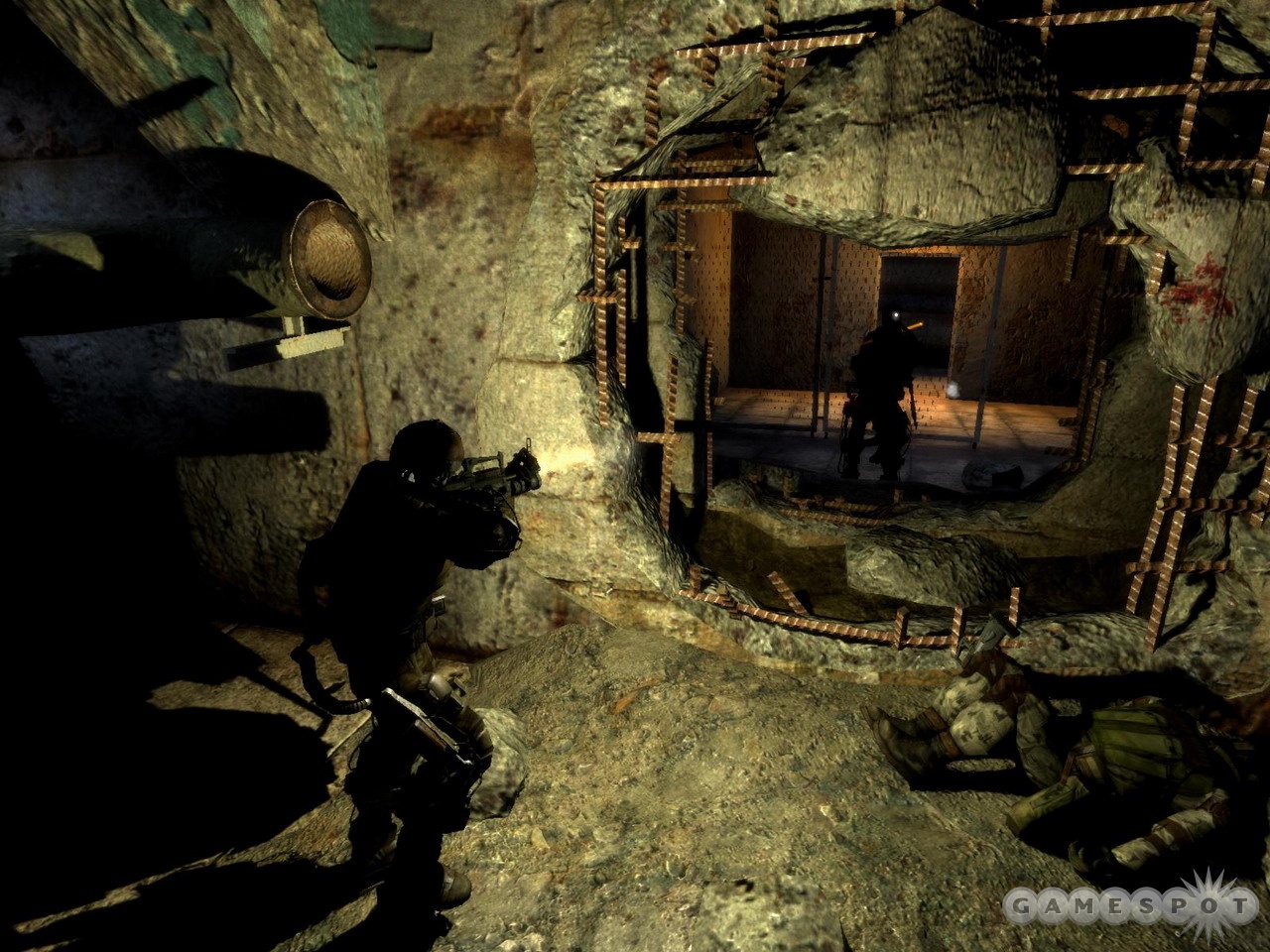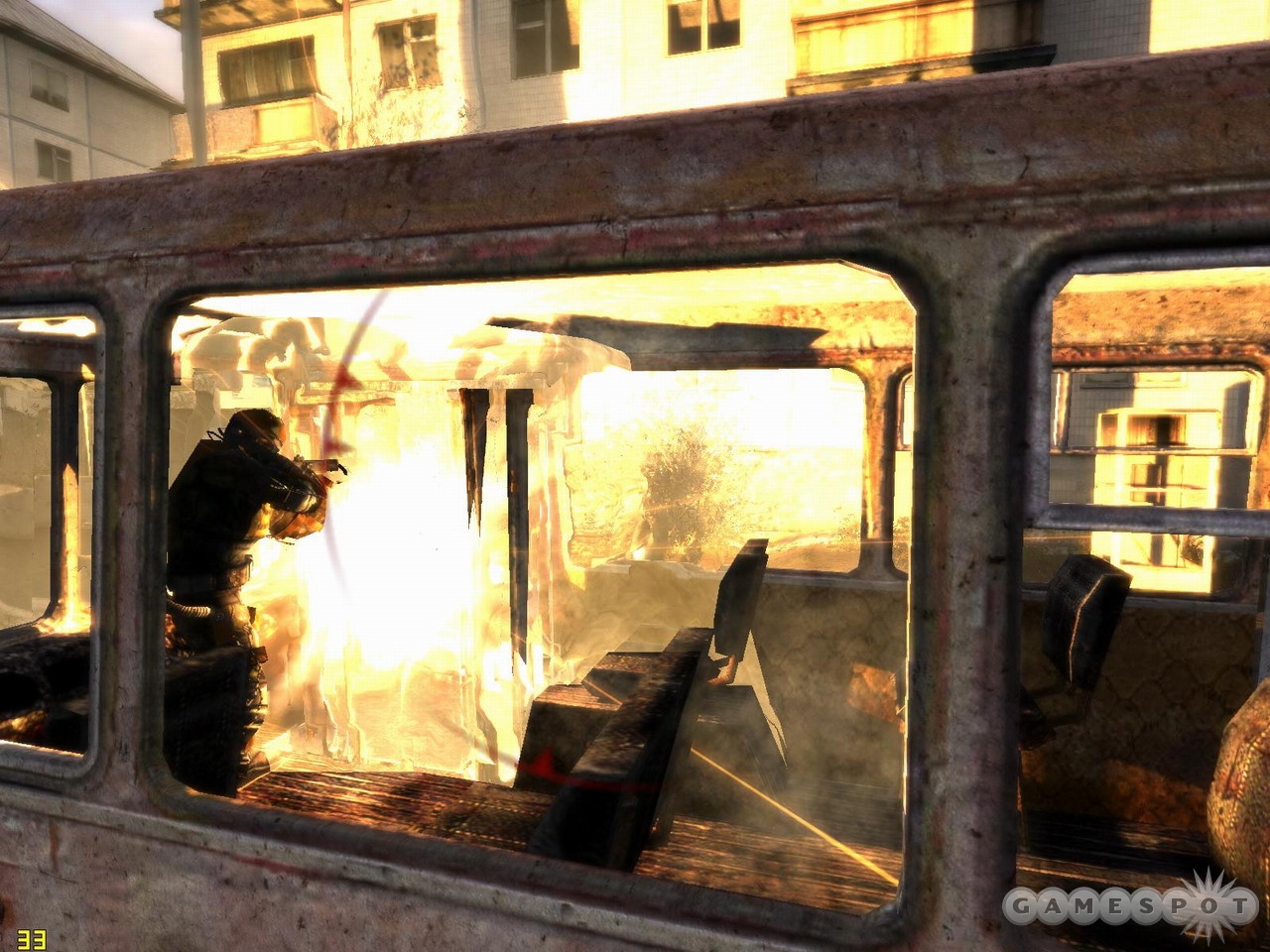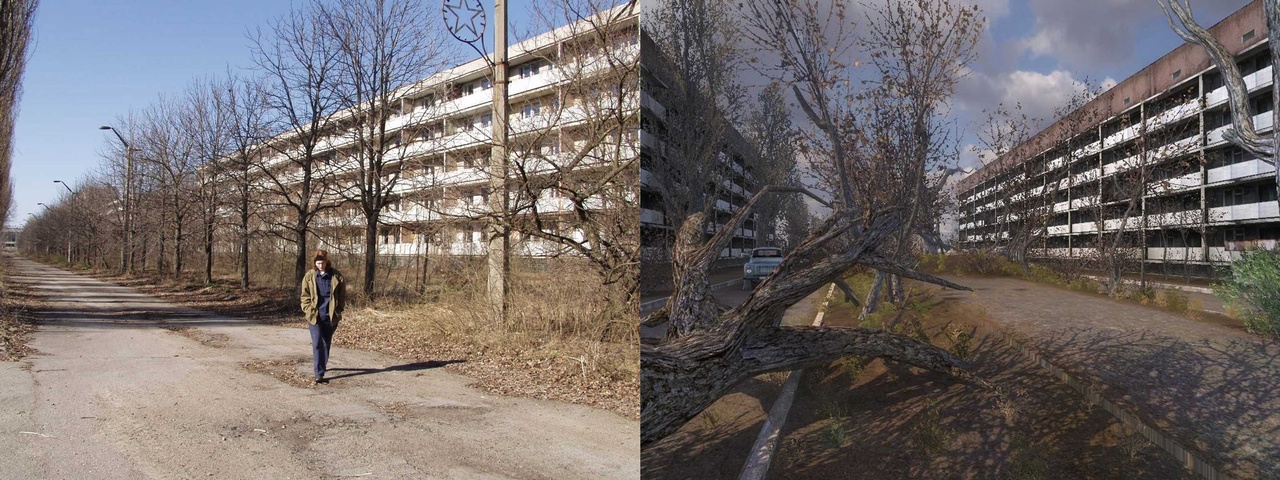S.T.A.L.K.E.R.: Shadow of Chernobyl Updated Q&A - Smart AI, Advanced Physics, and Multiplayer
Project lead Anton Bolshakov discusses the advanced artificial intelligence and weapons modeling that make this first-person survival action game different from anything that you've played.
You probably wouldn't want to vacation around the exclusion zone that surrounds the infamous nuclear reactor at Chernobyl, which melted down in 1986. But when S.T.A.L.K.E.R.: Shadow of Chernobyl ships next month, you'll be able to adventure all you want around a fictional version of Chernobyl, set in a universe where the radiation has done strange things to the area. That's because you'll play as a stalker, a heavily armed scavenger looking for valuable artifacts while also battling the mutant creatures and rival stalkers that inhabit the zone. S.T.A.L.K.E.R. blends first-person action with a wide-open world that you can explore at will; you won't be following a linear path, like in so many action games. With the game finally set to ship next month, we caught up with project lead Anton Bolshakov to learn more about the game's advanced features.
GameSpot: Give us an update on the game's development. What aspects of the game is the team working on now?
Anton Bolshakov: We are close to the finish line. The team is preparing the release-candidate version. The feature list is already closed, but we are still correcting some bugs, fine-tuning the balancing, optimizing the game for different PC configurations, and just polishing the game as a whole. So in general, everything is going well and according to plan.

GS: Tell us about the combat in the single-player game. How true to life are the weapons and damage models? Is the game intended to be highly realistic and punishing for less-skilled players?
AB: S.T.A.L.K.E.R. is oriented around realism, so we are doing everything in such a way that the player will feel that everything is real, including graphics, atmosphere, and artificial intelligence. We used the same principle working on weapons in the game.
There are about 30 weapon types, most of them based on real prototypes. Many of these weapons are upgradeable with scopes, grenade launchers, and silencers, just as in real life. The same thing applies with the ballistics. Making apt use of the physics engine, we implemented a large number of interactive gameplay features, which makes the game more realistic and lively. Thus, true bullet ballistics were implemented in the game. To adjust the bullets, we used such parameters as mass, speed of flight, materials-piercing abilities, and environment resistance. As a result, our weapons act very realistically. For example, when you are shooting the Russian Vintorez rifle from long distances, you can see that the bullet is flying in a parabola. That is why while shooting at a target that is far away, you should aim a bit higher.
Real bullet speed makes it necessary to lead your target while shooting at a target that is moving and far away. The same goes for grenades; they use physics, creating physical waves and splinters after the explosion. We also created a ricochet that sometimes can be used to shoot a covered enemy, if you are able to calculate everything correctly, of course. You should remember the ricochet effect so you don't hit yourself accidentally.
Using iron sights is more accurate than shooting from the waist, and shooting while you are sitting is more accurate than shots made while running. You should also take into account the density of materials and the ability to shoot through them--concrete blocks are good cover, while thin metal and wood are not. In addition, we should say that nearly every weapon has different cartridge types (splinter, armor piercing, and so on), each of which has its own physical properties. And don't forget to change your weapons from time to time, as the weapons show realistic wear and tear over time.
We created a realistic damage system where the torso or headshot will be completely different from the hand or leg ones. You will see the proper animations of enemies hit in each body part. After a serious torso hit, the enemies will fall on the ground squirming in pain. The more injured a character is, the more that character's state will change--heavily injured characters will leave tracks of blood (which can be followed). Without dressing a wound, you can bleed to death.
By creating the combat system, we were trying to make it realistic, fun, and as efficient as possible, so we think that beginners will be able to get used to it very quickly. Having familiarized themselves with the weapons properties, players will be able to use them effectively in different combat conditions.
GS: How does the combat in the single-player game differ from standard first-person shooter battles? Will players have to be more concerned about conserving ammo or not being able to heal themselves from damage, for instance?

AB: The concept of the player's freedom in S.T.A.L.K.E.R. makes the game a lot different than other shooters.
First, the player may approach the game scene from absolutely any point or position. For example, in order to accomplish the task of eliminating the bandits encamped in the factory, the player may go in with guns blazing, or try sneaking up from flanks, or circle the camp around, or use stealth-style play.
Second, with any tactics chosen, the player will obtain a corresponding AI reaction. The universal combat AI we created is taught to skillfully act in any circumstances. Thus, we gave each non-player character virtual hearing and sight. As a result, combat against the AI would start only after NPCs have spotted the player.
For example, a player could sneak up to an army post, snipe an enemy, and hide. Once the other NPCs spot their friend's body, they will react by raising the alarm and seeking out the enemy. As soon as the enemy is detected, the AI will, while shooting, run for cover, reload, and look out for targets. The combat AI was taught to reload guns and search for new cover if wounded. Aside from individual actions, the AI is taught to effectively act as a team. Thus, in battle the AI characters exchange messages with each other and use suppression fire when one of them asks to cover him, and the rest will back him up.
Who Stalks the Stalkers?
AB (cont.): When severely wounding or killing an enemy, the AI will brag about their deed to their team; they also react to losses among their team, some might even panic. We taught the AI to react differently depending on whether it is fighting against one opponent, two, three, or more, so as to have the ability to differentiate the tactics. Thus, if there are two groups fighting with the player involved in one, the other group won't all fire at the player. Instead, the other group will distribute the number of enemies between themselves depending on strength. 
Answering to the second part of the question, a considerable part of the gameplay revolves around the survival of the player. By the notion of survival, we mean not only physical survival in the exclusion zone, but also the meticulous planning of equipment, careful movement thorough the zone, and knowing when to fight and when not to. Lack of bullets is also common, especially when the game begins. The player will have to pick up ammunition from slain enemies, look for hidden stashes, trade, and so on.
GS: What role will the environment play in S.T.A.L.K.E.R.'s battles? We've seen several missions that take place in crowded industrial ruins that provide plenty of cover, but how interactive will the environments be? Will players be able to destroy or deform parts of the world in battle, such as knocking over walls or piles of debris with explosions to provide more cover or crush their enemies underneath?
AB: The large outdoor setting, the highly detailed and complex geometry, and the freedom inside the game give the player an enormous amount of possibilities regarding combat action planning. Using binoculars, the player is able to look over the area, count enemy forces, and find a good spot for attack. The player will find a lot of dynamic objects and physics. For example, by shooting at a gas container that is next to a group of enemies, you may kill more than one with a single shot. Or by shooting out a lamp in an underground area, you will be able to set up an ambush for an enemy stalker.
GS: Given the game's highly open-ended nature, tell us about how the team designed the various battlefields in the game. How will these environments let players take multiple approaches to each battle?
AB: In designing levels, we were guided by the idea of creating the most effective battles as possible. First, we determined key points where battles would be interesting, with lots of cover and possibilities of short rushes and work-arounds--for example, a junkyard or a destroyed hangar. We placed a lot of objects that give the player and NPC characters many possibilities and freedom. We changed and shifted these details many times while balancing and testing until the best configurations were found.
GS: Give us an overview of what S.T.A.L.K.E.R.'s multiplayer modes will have to offer.
AB: Multiplayer in S.T.A.L.K.E.R. consists of three modes: deathmatch, team deathmatch, and the unique artifact hunt. The first two modes are well known from the other games. Artifact hunt is a mode where the players are split into two teams and fight for artifacts that appear randomly on the map. The task is to take the artifact to your base. The team that has more artifacts wins.
In spite of the fact that the rules of our multiplayer are similar to other games' rules, you will always recognize that S.T.A.L.K.E.R.'s unique atmosphere, physics, highly detailed environments, anomalies, and artifacts set the game apart from other multiplayer games.
Among the other features of the multiplayer are dynamic day/night cycles, a ranking system, upgradeable weapons, and different types of cartridges for every weapon type. We specially designed maps for multiplayer. We used professional cyber-sportsmen in designing and balancing maps. Multiplayer supports up to 32 players over LAN or Internet. We'll have the multiplayer beta open soon, and we invite everyone to take a look.
GS: How will the combat system translate to multiplayer play? Will multiplayer S.T.A.L.K.E.R. play like a standard arcade-style multiplayer shooter, or will players still need to worry about dwindling ammo supplies, limited inventory space, and radiation?
AB: It is worth noting that while working on multiplayer, we had to modify and readjust a number of single-player elements, taking in the fact that the combat is being played against other people.

First, the weapons were readjusted to make the combat closer to reality. Now the player will be able to die from a single headshot, while in single-player, the player would have to absorb half a clip of ammunition. Let me mention, however, that weapons' characteristics were readjusted in multiplayer, taking into account the weapons' balance in the single-player game. In other words, weapons that are weak in single-player remain weak in multiplayer, too.
In the course of the multiplayer testing, we had to implement certain changes in the bullet ballistics. For instance, the air resistance parameter was increased. Now you can't kill an enemy with the basic pistol at a long distance. When using a silencer, the weapon's power was reduced, while at the same time if you shoot with the silencer applied, the opponent will not see the direction of fire on the minimap. Bullet conservation is present only in the artifact-hunt mode, while in the other two modes there is no shortage of bullets.
GS: Finally, is there anything else you'd like to add about S.T.A.L.K.E.R.'s combat system?
AB: We are making the combat in S.T.A.L.K.E.R. as interesting as possible, and we are hoping that the players will enjoy their experience as much as we do!
GS: Thank you, Anton.
Got a news tip or want to contact us directly? Email news@gamespot.com
Join the conversation